Do Sunburn Peels Result in Permanent Scars?
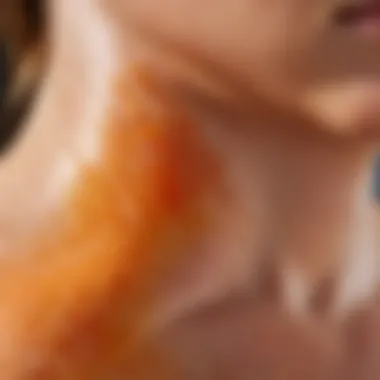
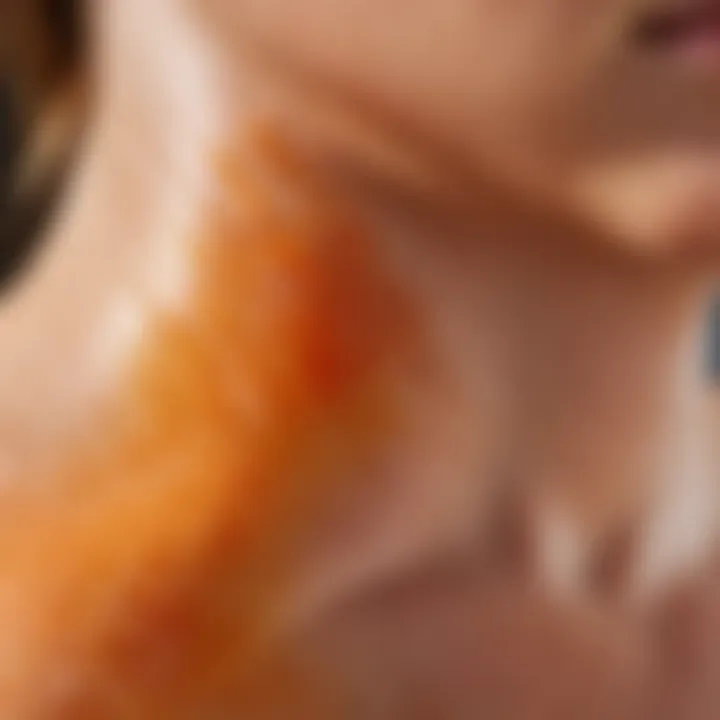
Intro
Understanding the skin’s response to sun exposure reveals much about its capacity to heal. Peeling is often seen as a sign that the skin is repairing itself, yet it can also leave individuals concerned about future implications, particularly the risk of scarring. The journey of skin healing after a sunburn is intricate, and several factors come into play that can influence the final outcome.
In this article, we’ll delve into the biological processes involved in peeling, the mechanisms of healing, and the various factors that can lead to scarring. Additionally, we'll furnish practical advice on how to treat sunburn effectively, highlighting crucial aftercare strategies to mitigate potential damage. Whether you're an avid sunbather or simply caught off-guard by unexpected rays, gaining insights into this process can empower you to take better care of your skin.
Understanding Sunburn and Skin Peeling
Understanding sunburn and the subsequent skin peeling is vital for anyone who spends time outdoors, especially in sunny locales. Not only does this knowledge empower individuals to take better care of their skin, but it also prepares them to recognize when things may not be healing as they should. The skin is our body's first line of defense, protecting against environmental factors, and when it suffers from sunburn, it initiates a complex biological response that can result in peeling. This article will shed light on this healing process, the potential for scarring, and how to best manage the skin during recovery.
What Causes Sunburn?
Sunburn occurs when skin is overexposed to ultraviolet (UV) rays from the sun. The primary culprit is UVB radiation, which penetrates the skin and can lead to damage to the DNA in skin cells. When skin cells detect this damage, they trigger an inflammatory response. This response causes red, painful skin and, in the aftermath, peeling as the body attempts to shed damaged cells. The severity of sunburn depends on a variety of factors, including the intensity of sun exposure and individual skin type, which makes it important to recognize personal limits.
The Biological Process of Skin Peeling
The biological reaction to sunburn is multifaceted, encompassing several mechanisms that ultimately lead to skin peeling. This is the body's way of discarding damaged cells and encouraging renewal. There are two key elements in this process:
Role of UV Radiation
UV radiation plays a central role in causing sunburn and initiating peeling. Excessive exposure to UV rays disrupts the skin's cellular structure, leading to inflammation. The skin responds by producing more melanin, the pigment that darkens the skin, attempting to protect against further UV damage. While this might provide temporary shielding, it can also lead to the formation of blisters, which often precede peeling. A major characteristic of UV radiation's effect is that it not only causes immediate damage but can also contribute to long-term skin issues, like premature aging and an increased risk of skin cancer. Recognizing the effects of UV radiation is essential, as it paves the way for healthier sun habits in the future.
Skin Regeneration Mechanism
Following the damage inflicted by sunburn, the skin undergoes a regeneration mechanism that is remarkable in its complexity. The primary characteristic of this mechanism is its ability to foster healing through tissue regeneration and the formation of new cells. After the inflammatory phase, which might last a few days, the skin begins to recover by shedding the damaged cells. This peeling process is not merely cosmetic; it is a sign that the skin is working to restore its protective barrier. While this regeneration process can be beneficial, it's important to note that improper care during this time can lead to unfavorable outcomes like scarring, particularly when peeling skin is improperly handled or excessively irritated.
Is Scarring a Likely Outcome?
Contemplating whether sunburn peeling can lead to scars is vital. Understanding scar formation helps in grasping how the skin heals after sun exposure. Peeling is often a sign of the body’s attempt to rejuvenate itself, but for some, this process may lead to lasting marks. Getting acquainted with the possibility of scarring equips individuals with the knowledge to take better care of their skin.
Factors Influencing Scar Formation
Depth of Sunburn
The depth of sunburn plays a crucial role in determining if scars will develop. Sunburns are categorized into first-degree, second-degree, and even more severe types, each penetrating the skin differently. First-degree burns impact only the outer layer, causing redness and pain, while second-degree burns reach deeper, causing blistering and more significant damage.
A deep sunburn often results in more extensive skin cell damage, which can trigger a robust healing response. Unfortunately, this aggressive response can lead to scar formation as the skin attempts to repair itself. The higher the severity of the burn, typically, the higher the risk of scarring. Though first-degree burns might be easily overlooked, it's essential to treat even minor sunburns with care to steer clear of long-term skin issues.
In short, understanding the depth of sunburn is beneficial, particularly when contemplating recovery strategies. Ignoring even mild burns could have unforeseen effects on skin appearance, even years down the line.
Skin Type and Sensitivity
Skin type, along with its sensitivity, is another core aspect influencing scar formation from sunburns. Individuals with fair skin usually have thinner skin and, therefore, thicker epidermal layers that might not withstand prolonged sun exposure as effectively. Contrarily, those with darker skin might experience different types of responses to sunburn.
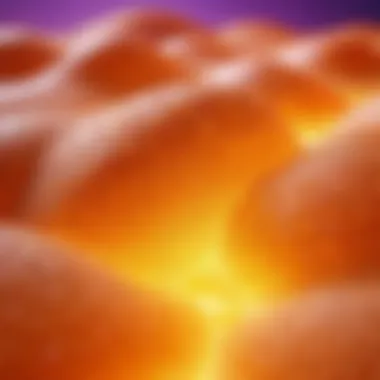
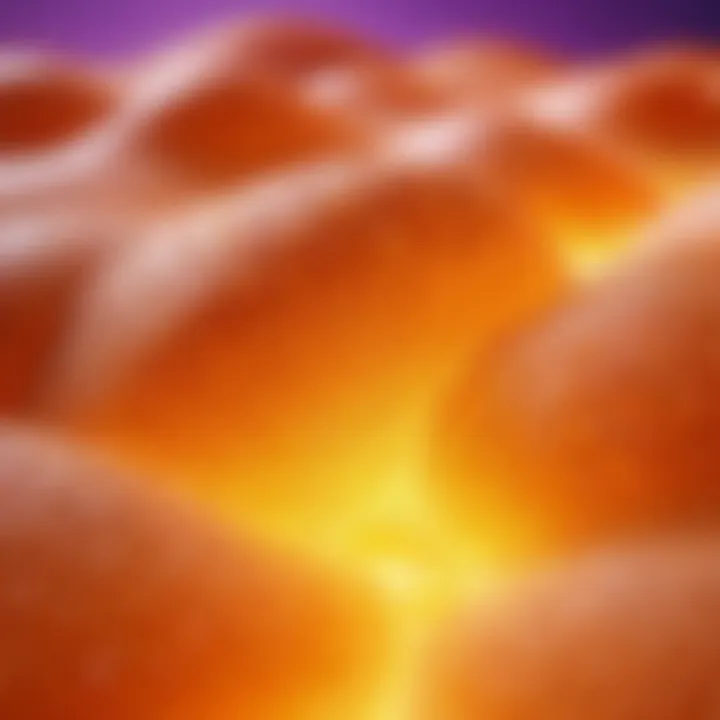
For example, sensitive skin could exhibit a more pronounced inflammatory reaction, potentially increasing the risk of post-inflammatory hyperpigmentation, which can sometimes be mistaken for scars. Notably, sensitive skin requires more cautious handling, meaning that appropriate care must be taken post-exposure to minimize potential scarring.
In essence, the uniqueness of skin type and sensitivity underscores the need for customized sun care. Acknowledging one’s skin characteristics allows for more focused sunburn treatment strategies, thereby reducing the chance of unpleasant reminders of summer outings.
Distinction Between Peeling and Scarring
Understanding the distinction between peeling and scarring is fundamental in managing the aftermath of sunburn. Peeling is a natural defense mechanism aimed at shedding damaged skin cells, indicating a healing phase. In contrast, scarring is often a more permanent outcome from deeper skin damage that can disrupt the skin’s normal architecture.
Peeling typically resolves within a few days to a week, whereas scars may remain visible for months or even years. Thus, recognizing early symptoms of severe sun damage can lead to timely interventions, preventing the transition from mere peeling to lasting scarring. Attention to skin care could make a notable difference in cosmetic outcomes after sun exposure.
Understanding skin damage provides insight into how we can effectively care for our skin and promote healing post-sun exposure.
Signs That Scarring May Occur
Understanding the indicators that scarring can take place following sunburn is crucial in managing skin health. Recognizing these signs early not only aids in preserving the appearance of your skin but also informs treatment decisions. The sooner you identify any serious damage, the better your chances of reducing potential scarring. Being aware of what to look for grants you a sense of agency in your own skin care journey.
Identifying Serious Damage
When skin sustains sunburn, a range of damage can occur. It's essential to differentiate between mild sunburn and more severe cases that might leave lasting impressions on the skin.
- Blister Formation: If you notice blisters developing on the affected area, consider it a major red flag. Blisters are a sign that your skin has endured significant damage—these pockets of fluid are your body’s way of protecting deeper layers from further harm.
- Persistent Redness: While some redness is normal with sunburn, if the skin remains intensely red for several days and does not show signs of improvement, serious damage could be present.
- Pain and Discomfort: Sunburn can be painful, but if you experience extreme pain—especially in a localized area—it can indicate damage deep within the skin.
- Prolonged Healing: If the peeling process seems to go on much longer than a week and the new skin still appears dark or discolored, that's a cue to be cautious.
In summary, a keen eye for these signs can help you assess the severity of your sunburn, aiding decision-making in aftercare or the need for professional assistance.
When to Seek Medical Advice
Recognizing when to consult a healthcare provider can make a world of difference. If certain conditions prevail post-sun exposure, don’t hesitate to reach out for professional guidance. Here are situations that warrant a visit to a doctor:
- Severe Symptoms: Marked signs of infection such as increasing pain, oozing, or fever should not be taken lightly.
- Significant Swelling: If the skin around the burn site swells excessively, this can indicate a more immediate concern.
- Alarming Changes in Skin Color: While some skin discoloration is expected, drastic shifts, particularly any signs of deep purple or blackening, suggest deeper tissue damage.
- Worsening Condition: If it seems that your injury is getting worse rather than better over time, don’t ignore this signal.
Seeking prompt medical attention can mitigate further damage and aid in proper treatment, potentially decreasing the risk of long-term scarring.
By staying aware of these signs and knowing when to act, you can empower yourself to respond appropriately after a sunburn. This proactive approach is your best defense against potential scars.
Effective Aftercare for Sunburnt Skin
When we think about skin health after being sunburned, the focus often drifts towards just the immediate aftermath of the burn itself. However, effective aftercare is paramount for safeguarding the skin's restorative processes, enhancing healing, and reducing the risk of long-lasting damage, such as scarring. Employing a thoughtful aftercare routine can mean the difference between minimal recovery challenges and more significant skin complications down the line.
Immediate Care Steps
Hydration and Moisturization
Hydration is the cornerstone of effective aftercare. Sunburned skin can become not only painful but also extraordinarily dry and itchy, thanks to the damage inflicted by ultraviolet rays. To combat this, applying a heavy moisturizer soon after the skin has cooled can help lock in moisture. Additionally, using lotions that contain ingredients like aloe vera or glycerin are especially beneficial, as they have soothing properties that provide relief while actively hydrating the skin.


The key characteristic of hydration is its dual action; it mitigates pain and aids the skin in its healing process. Why is it so popular? It's simple: keeping the skin moisturized not only alleviates discomfort but also improves how the skin looks as it heals.
However, not all moisturizers are created equal. Products containing alcohol or fragrance may irritate sunburned skin even further. Hence, it's wise to choose hydrating products designed explicitly for sensitive skin, providing optimal recovery without additional woes.
Cleansing Techniques
How you cleanse your sunburned skin matters just as much as how you moisturize it. Gentle cleansing techniques help remove any dead skin or impurities without exacerbating the irritation or causing further harm. A soft cloth and lukewarm water can go a long way. Steer clear of exfoliants or harsh soaps for the first few days; these can lead to more irritation.
The essence of effective cleansing is in its gentleness. It helps to keep the skin clean without stripping away the beneficial moisture it desperately needs. This is why creamy or oil-based cleansers are often favored; they cleanse while preserving hydration.
A unique feature of proper cleansing is in its ability to prepare the skin for subsequent treatments. A well-cleansed surface allows hydrating lotions and healing ingredients to penetrate effectively, which can dramatically improve their efficacy. On the flip side, failing to cleanse properly may lead to infection or prolonged recovery time.
Long-term Care Strategies
After the most painful phase of sunburn has subsided, long-term care becomes a crucial focus. Implementing strategies for these later stages promotes resilient skin and helps to prevent future complications.
Using Sunscreens Effectively
Applying sunscreen is not just a summertime ritual; it’s an essential part of long-term skin health. After experiencing sunburn, your skin becomes increasingly sensitive to sun exposure. Thus, using sunscreen can protect against future damage while supporting healing skin.
Using a broad-spectrum sunscreen with an SPF of 30 or higher is crucial. This offers protection against both UVA and UVB rays, thereby shielding the skin from further issues. The key selling point here is the ongoing need for protection, even on cloudy days, or when you're indoors.
A distinctive quality of effective sunscreen use is in its regular reapplication. It should be applied every two hours or immediately after swimming or sweating. This consistency helps prevent repeat sunburns and contributes to a healthy, scar-free complexion in the long run.
Regular Skin Check-ups
It may seem mundane, but establishing a routine for skin check-ups can yield substantial benefits. Regular assessments by a dermatologist allow for early detection of any unusual changes in your skin, especially after you’ve experienced sunburn.
The advantage of skin check-ups lies in their preventative nature. They provide an opportunity to catch any worsening signs of damage or other skin concerns before they lead to significant complications. Visiting a professional can offer peace of mind and actionable guidance tailored to your skin type and condition.
Moreover, describing the unique feature of routine skin evaluations is that they can help track your skin’s improvement over time. Keeping a record of changes can be instrumental in evaluating the effectiveness of your aftercare methods, guiding you towards a more fruitful routine.
Remember, diligent aftercare is not just about healing existing damage; it’s about creating a healthier future for your skin. Taking these steps seriously gives you the best chance for smooth, scar-free skin post-sunburn.
Preventing Future Sun Damage
Preventing future sun damage is critical not just for maintaining the appearance of your skin, but also for safeguarding your overall skin health. The adverse effects of sunburn go far beyond those initial, painful days of redness and peeling. In the long run, repeated sun exposure can lead to premature aging, dark spots, and an elevated risk of skin cancer. This means that understanding effective preventative measures is not merely a matter of aesthetics—it's essential for your well-being.
Understanding UV Protection
When tackling the topic of sun damage, one cannot undervalue the significance of UV protection. Ultraviolet (UV) rays from the sun are the main culprits behind sunburn and subsequent skin damage. There are two primary types of UV rays to be aware of:
- UVA: These rays penetrate the skin deeply and contribute to skin aging and wrinkles.
- UVB: These are primarily responsible for sunburn and can cause immediate skin damage.
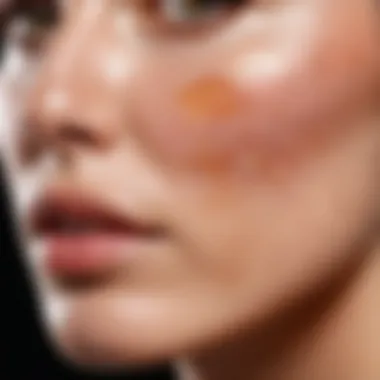
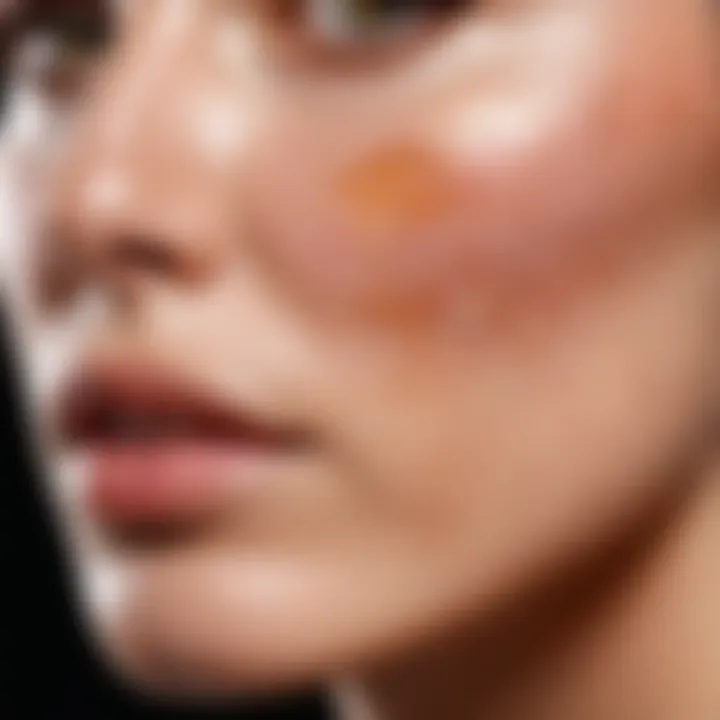
Using a sunscreen that provides broad-spectrum protection against both UVA and UVB rays is vital. This type of sunscreen not only guards against burns but also helps to prevent long-term damage that contributes to skin cancers and other issues. So, when picking out your beach buddy, don’t just reach for any bottle; look for one that boasts this wide coverage.
"The best sun protection is a combination of sunscreen, protective clothing, and shade."
Choosing Appropriate Sunscreens
Not all sunscreens are created equal. With countless products available, finding the right match for your skin type and lifestyle can feel like finding a needle in a haystack. Here are some factors to consider:
- SPF Level: A minimum of SPF 30 is generally recommended, which blocks about 97% of the sun's harmful rays.
- Water Resistance: If you're planning on swimming or sweating, opt for a water-resistant formula. Remember, even water-resistant sunscreens require reapplication after a certain duration, usually every two hours.
- Skin Type Considerations:
- Ingredients: Check labels for active ingredients like avobenzone, octisalate, and homosalate, among others. These are effective agents in blocking UV rays.
- If you have oily or acne-prone skin, look for non-comedogenic options.
- For sensitive skin, go for mineral sunscreens that contain zinc oxide or titanium dioxide as they are less likely to irritate.
Choosing the right sunscreen can make a significant difference in your skin’s resilience against future sun exposure, resulting in healthier skin over time.
Seeking Professional Treatments
Navigating the aftermath of sunburn peeling can be tricky, especially when one is unsure if that peeling skin might leave a mark. Seeking professional treatments is essential, particularly if the home remedies don’t seem to cut it or if the skin shows signs of serious damage.
With a wealth of options available, from dermatological care to advanced skin therapies, it is vital to consider various aspects before delving into treatments. For starters, professionals can assess the degree of damage. They have the expertise to identify whether the peeling is a superficial issue or something that may lead to scarring. This professional assessment surely outweighs any guesswork.
Another significant benefit is the tailored advice a dermatologist can provide. Unlike generic remedies found online, they can create a skin recovery plan that takes into account the client's unique skin type and concerns. This can be a game changer in ensuring proper healing effectively and efficiently.
"Prevention is better than cure, but in the case of severe sunburn, timely treatment can alter the outcome dramatically."
In addition, professional treatments can expedite the healing process. Improper aftercare may prolong recovery or worsen existing problems. Dermatologists use cutting-edge technology and treatments to facilitate skin regeneration and minimize the risk of scarring. The cost might seem steep, but the long-term benefits of having healthy skin are priceless.
When Home Remedies are Insufficient
When it becomes clear that home treatments aren't cutting it, it is time to consult with a skin care professional. Popular home remedies like aloe vera or over-the-counter moisturizing creams can soothe the pain and reduce discomfort initially. However, they often don't address deeper issues such as inflammation or potential infection following severe sunburn.
If symptoms worsen or turn into blisters, or if redness and swelling escalate, it’s crucial to avoid playing the waiting game. Infections, swelling, or excessive redness could signal a need for intervention, which home remedies simply can't provide. In such instances, medical professionals might recommend prescription medication or therapies tailored to effectively heal the skin.
Available Dermatological Treatments
In the realm of dermatological treatments, a few notable options stand out for their effectiveness and targeted benefits:
Laser Therapy Options
Laser therapy has gained traction as a go-to treatment for both severe sunburn and resulting skin issues. This method uses focused light to target damaged skin layers, promoting healing and reducing the chance of scar formation. One key characteristic of laser therapy is its precision. It can effectively treat specific areas without affecting surrounding healthy tissue.
A highly sought-after benefit of laser therapy is its ability to stimulate collagen production. Collagen is crucial for maintaining skin elasticity and firmness, and stimulating its production can vastly improve the skin’s appearance post-sunburn, making it a popular choice for individuals looking to minimize scarring. However, it’s worth noting that multiple sessions may be required for optimal results, which can add up financially, given that costs vary widely depending on the provider and treatment area.
Chemical Peels and Microdermabrasion
Chemical peels and microdermabrasion are additional treatments worth considering when it comes to skin recovery. Chemical peels work by applying a solution that exfoliates and removes the outer layers of damaged skin, revealing fresher skin beneath. This process can significantly improve skin texture and tone, making it a beneficial option for folks who want to restore their skin’s natural appearance after peeling. However, it's essential to note that recovery can take time, and side effects like redness and peeling can occur, making planning around social obligations crucial.
On the other hand, microdermabrasion involves using tiny crystals to gently sand the skin for removing the outer layer. This treatment is effective for light scarring and can enhance skin renewal. A significant advantage here is that microdermabrasion usually requires little to no downtime, which is a boon for those with busy schedules. Yet again, like other methods, consistency is key; multiple sessions may be needed for noticeable results.
In summary, when sunburn peeling raises the red flag of potential scarring, exploring professional treatments is essential. Seeking professional help not only ensures tailored treatments but can also accelerate the healing process and preemptively address issues that might lead to lasting scars.







